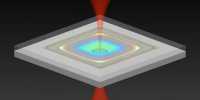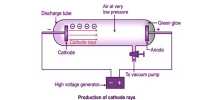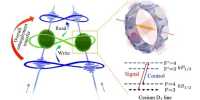Diamond is the hardest mineral known to humans. However, nanoscale diamonds can actually be bent and distorted. A team of Australian scientists has created a unique contactless way to do this.
In the process of their work, they also discovered a new form of plastic deformation and a new form of carbon. The lead author of the study, PhD student Blake Regan from the University of Technology Sydney (UTS), said in a statement, “Diamond nanophotonics, a leading application for emerging applications in micro-electrical mechanical systems and radiation shielding.” “It means various applications of medical imaging, temperature sensing, and quantum information processing and communication.”
In order for diamonds to be fully utilized in these fields, it is necessary to understand their behavior on the nanoscale. Carbon-based nanomaterials have different mechanical properties like diamonds compared to micro and nanoscales. Thus, how diamonds bend, deform, change state, and crack on these small-scale scales needs to be examined, the researchers noted.
Regan said, “We do not have this information for a single crystal diamond.” The study details how diamond nanoneedles, or nanopillars, which look a bit like a small toothbrush bristle, can be manipulated by a scanning electron microscope (SEM), Published in Advanced Materials. The electron beam of an SEM charges locally 20 nanometer-wide nanopillars and their surroundings, creating coulomb energy (electric field force) that reflects the nanopillars.
The team, which also included scientists from Curtin University and the University of Sydney, observed two types of distortion of diamond nanoneedles. First, they used the technique to bend the pelvis inversely at 90 degrees without fracturing, which is known as elastic deformation. Researchers created permanent distortions of diamonds, which had not been seen before, in further experiments, when the nanoneedles were of a certain size and the diamond crystals were concentrated in a certain way.
The new form of plastic deformation can be explained by the emergence of a new form of carbon, also called 8-carbon. Professor Igor Aharonovich, nanophotonics group leader at UTS, said in a statement, “Unlike many other hypothetical phases of carbon, and bonds like 8-carbon diamonds increasingly break in zipper-like patterns, a large region appears spontaneously, converting a large region from diamond to 08-carbon.”
A previous study in 2018 also found that the diamond did not break it, but did place an object on the bridge as a cause of flexibility. Discovering this “unprecedented mechanical behavior of diamonds” will in many cases help them use diamonds in nanotechnology. Aharonovich said, “Our research will support the design and engineering of new devices in applications such as super-capacitors or optical filters or even air filtration.”
















